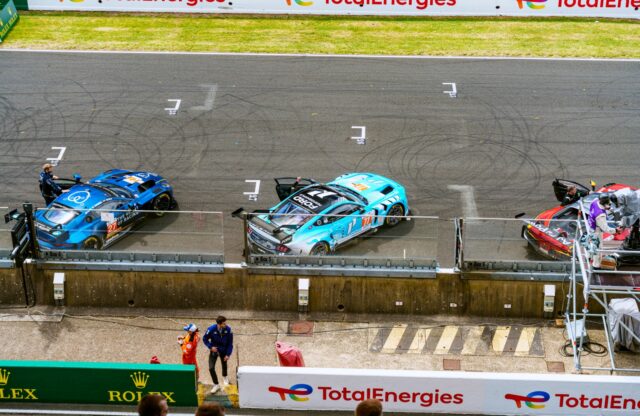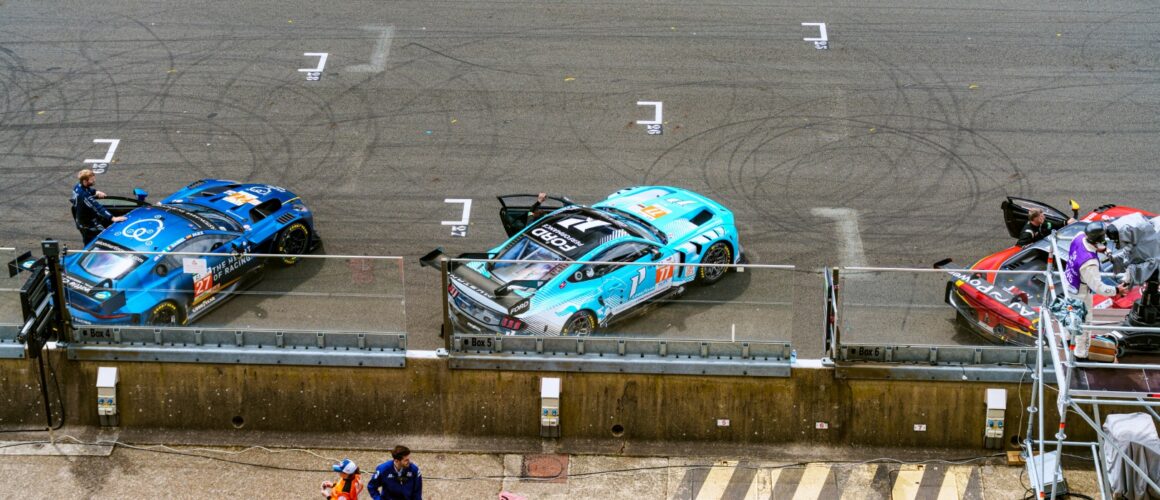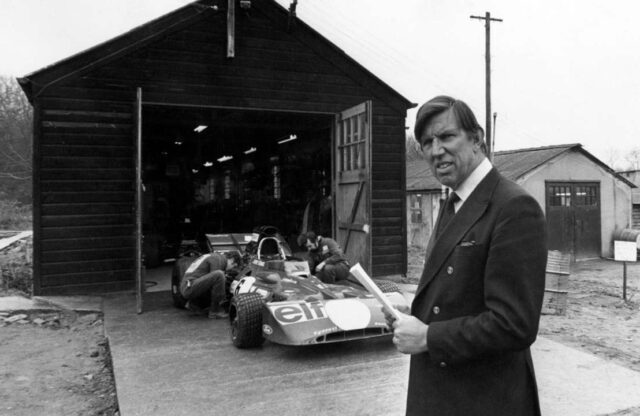The first time a Ford Mustang turned a wheel at Le Mans was 1967. Driven by privateer Claude Dubois and Chris Tuerlinckx, it put on a decent show until, as is often the way, mechanical maladies put its race to bed.
At the time, the Mustang was quite literally in the shadow of the GT40: Ford’s supercar had been on a winning streak, and the world’s best-selling sports car wasn’t quite as exciting as the machine that took down Enzo Ferrari. People liked the pony car, sure, but because it wasn’t on sale in Europe at the time, French audiences weren’t quite as enamoured with it as they could have been.
Le Mans 2024 is a different affair. The GT (or GT40 for that matter) is nowhere to be seen, and the Mustang has been on sale in this neck of the woods for the thick end of a decade. Ford decided to bring its seventh-generation ‘Stang to race in Europe with an eye to kicking off a new legacy in the LMGT3 category. The 2024 Le Mans endurance race campaign is a group effort between Ford Performance Motorsport, M-Sport, Proton Competition and race car legend Multimatic. Essentially, there’s no better combo out there to get Ford on the podium.
As the Mustang nameplate turns 60, making it one of the longest-running out there, Ford has been in full-on celebration mode. ‘Mustang Day’ was celebrated all over the world, and the seventh-gen car has finally hit European showrooms. But while the 60th anniversary is a decent excuse to get out the toys at Le Mans, why has Ford waited so long to bring it back to France’s finest?
Mark Rushbrook, global director at Ford Performance Motorsports, is fairly frank about it: “Part of it was as a company, when we took the decision to continue with the Mustang, to have that seventh-generation car, we’re gonna have a link-up or Mustangs that we’ll race globally at all levels. We took that decision three, three-and-a-half years ago.”
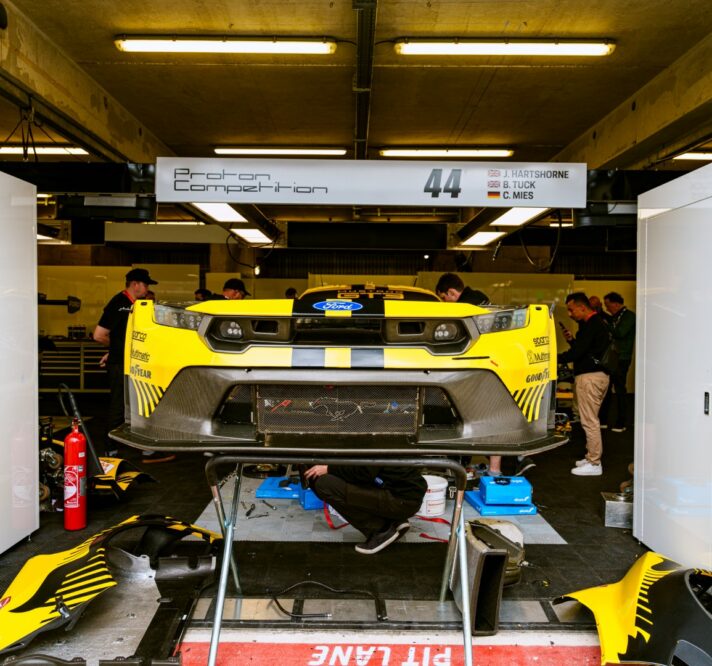
Ford knows that getting the car seen in the right places, on the right steps, is hugely important to push the Mustang brand
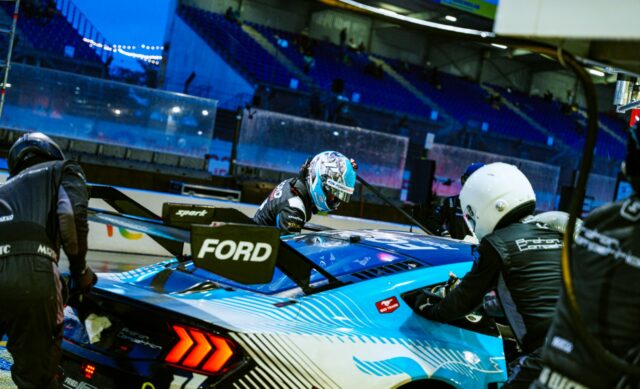
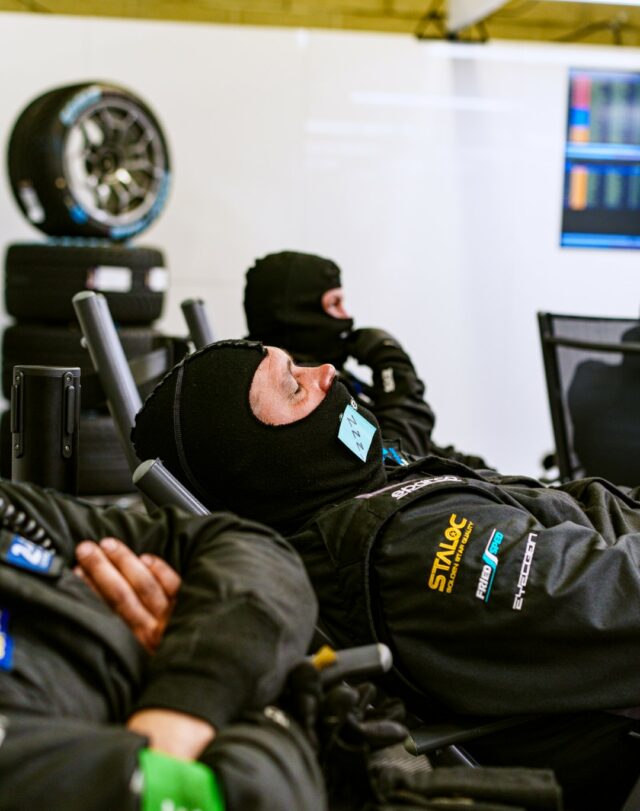
Developing a GT3 and a GT4 car isn’t something that just happens overnight, so the timing is more than a tiny bit deliberate. However, as Rushbrook adds, there’s a reason that decision was taken: “It feels to me like there’s even more excitement for the Mustang racing [here] than for the GT, because there are so many more Mustang owners. It’s a much more attainable car than a GT40 or GT, right?”
The GT40 was a pipe dream back in the 1960s for the vast majority, as were the later takes on the GT pedigree. They were halo cars to show the world how versatile Ford could truly be, but were not necessarily something your mum would drive to the shops. At its launch 60 years ago, the original Mustang captured imaginations all over the world – on road and on track. Its circuit exploits very much made it a ‘win on Sunday, sell on Monday’ car – who wouldn’t want a slice of victory on their drive? Especially one that came with engine, prices and specs to suit pretty much every buyer.
Bill Ford, executive chairman of the Ford Motor Company, echoes that statement today: “It’s why we race. It’s for the brand, the enthusiasts. You can’t always draw a direct line between a race and a sale, but it builds the brand for sure.”

It’s safe to say few people know more about Ford than, well, the Fords. Bill has lived and breathed it since day one, having spent time in plenty of different countries fighting the good Ford fight. He’s known the draw of Mustang for decades: “Years ago I ran Ford Switzerland, back when they put restrictions on vehicles. We had a 70bhp engine and a 90bhp engine to sell, and that was it. All our dealers were grey-importing Mustangs into the country, and I had to turn a blind eye to it because it wasn’t official, but I was happy to see Mustangs on the road again. We had no history with the Mustang in that country, we weren’t promoting it, and yet there was a big customer base for it.”
Switzerland, says Bill, isn’t the only place he’s seen passion for the car, despite it not being available there… “A few years ago, we introduced the Mustang to the Middle East and Africa. We had an event at the Burj Khalifa in Dubai. We put the Mustang on the roof. As I was doing my speech, looking out at the crowd, I noticed all these people in Mustang gear. Afterwards I walked over to them and asked: ‘Who are you guys?’ They were the Mustang Club of Slovakia. I said they didn’t have the Mustang just yet, and they answered: ‘No, but we’ve been waiting.’ That’s the power of the Mustang. It’s known and loved all over the world.”
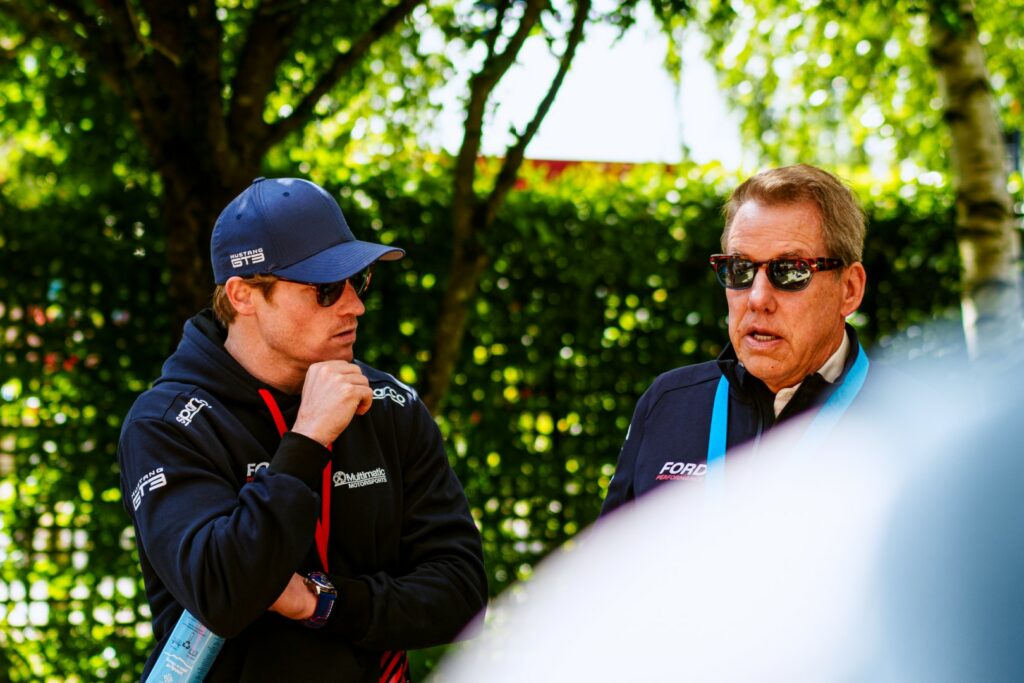
Will Ford, general manager of Ford Performance, understands why people seem to love the car so much: “Sixty years is a very long time to have a single nameplate and to basically be the same formula. It’s been woven into the cultural fabric of America for decades. America is one thing, but the car has become bigger than the US – it’s been in every form of media you can imagine, and people lust after them for their entire lives.
“The Mustang has been the blue-collar dream for decades now, a small slice of the American dream that almost anyone, anywhere in the world, can get their hands on. It’s hard to think of Americana without picturing a convertible Mustang driving up the PCH. I think we’ve done a good job of continually reinventing what makes the car what it is.”
Bringing the car to Le Mans, arguably the most famous endurance race in the world, with factory support above the door, may seem like it requires some brave pills, but Will knows the time is right to bring it back to La Sarthe. The class the car is racing in, LMGT3, is broadly the one in which the race machinery looks like cars you can actually buy. Thing is, not many people can buy a Ferrari 488, Porsche 911 or Aston Martin Vantage. The Corvettes that have raced here for the past couple of years are a more realistic proposition for most, but a mid-engined sports car might not be the most practical of choices.
“That’s the beauty of the Mustang,” continues Will. “It’s the ‘everyman’ sports car. You still get your freedom, and you get ultra-high performance, but it’s attainable and approachable.”
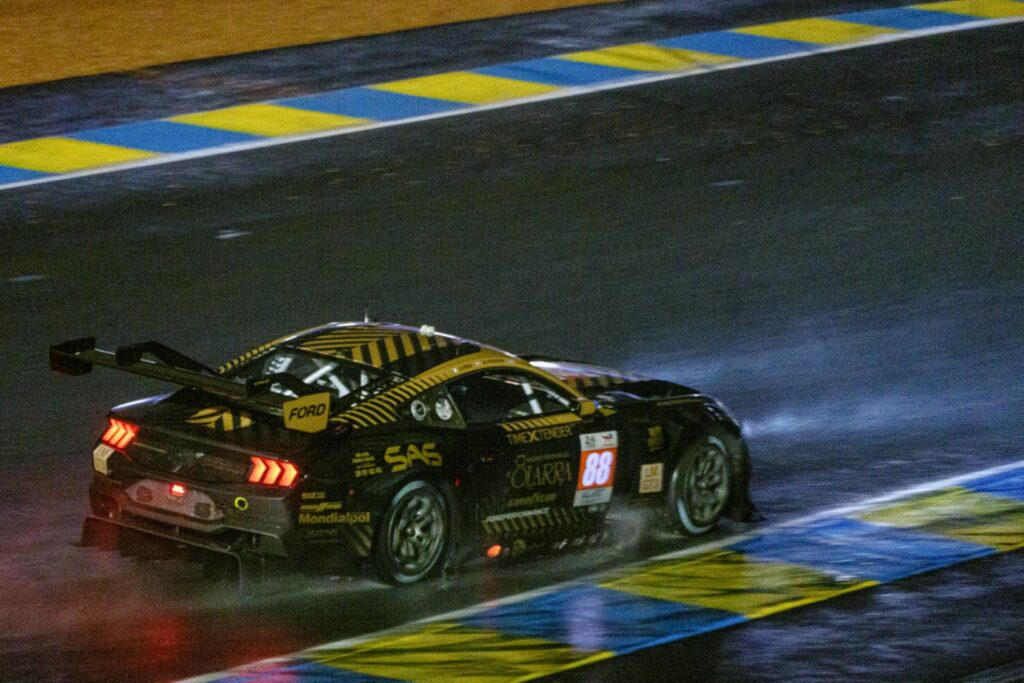
Its attainability is what keeps it alive, and helps people fall for it generation after generation. Mark Rushbrook explains: “Everybody has a Mustang story, right? Either from owning one, or from their friends and family. It’s global – there are Mustang clubs all around the world. The love for the Mustang is out there, and whenever people see it – and are now seeing it on the race track – it resonates for them.”
The love for the car, depending on how deep into the internet you wish to delve, is incredible, but the community around it is a huge driving force for the team. Rushbrook tells of going to Mid-Ohio for the first round of the Mustang Challenge. A huge 27 race-prepped Mustang Dark Horse Rs took to the track, and, says Rushbrook, the noise of the V8s was something else.
He found some Mustang fans while he was watching the race, and was blown away by their commitment. While the Mustang race was in a more supporting role for the weekend, people had come in their droves to see and hear cars that look like the ones they love, rip up the track. We may be a bit off that level of commitment in Europe, but a keen eye would have spotted a few Mustang jackets and t-shirts around Le Mans in 2024.
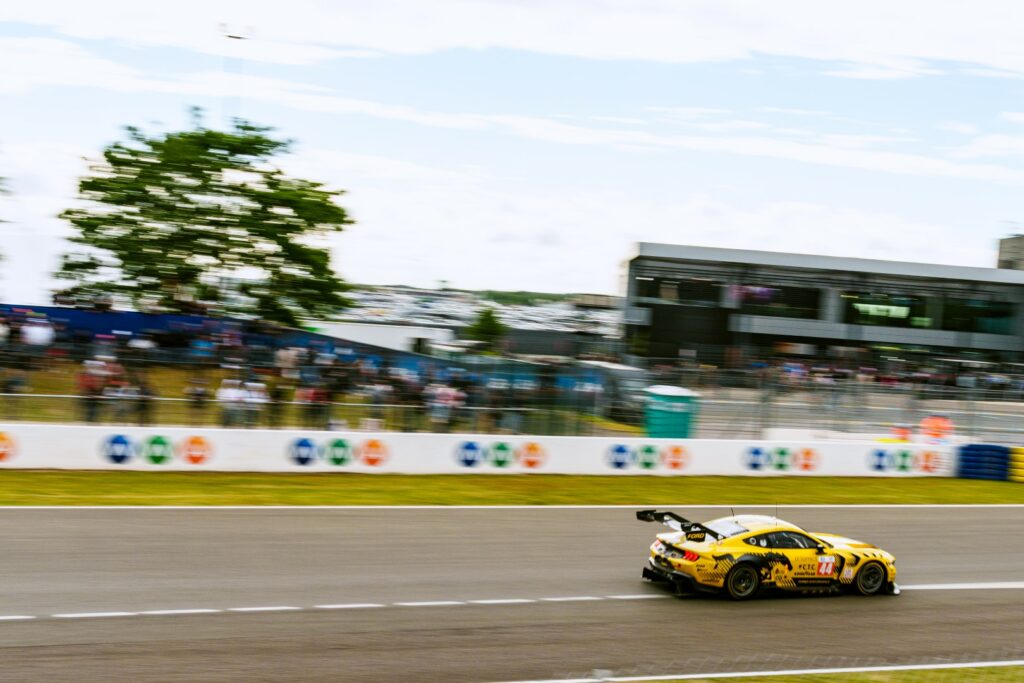
Larry Holt, vice president of Multimatic Motorsports, recalls driving a then comparatively new Mustang into town for the 2016 race, and finding people knew more about it than he expected: “I was driving through town on the Friday night, down where it gets crazy, y’know?” [In and around the race, it’s not uncommon to find groups of people who’ve ‘enjoyed’ adult beverages, encouraging people in interesting cars to make noise, smoke and have fun.] “There’s a group of French guys there chanting: ‘LINE LOCK! LINE LOCK! LINE LOCK!’ because their damn press had been talking about it, and they all knew about it. Anyway, I obliged.”
You’d expect there to be some pressure associated with bringing a car as historied as the Mustang back to Le Mans, and, depending on who you talk to, there is. Ford knows that getting the car seen in the right places, on the right steps, is hugely important to push the Mustang brand, and its story, to new heights. To echo Rushbrook, everyone has a Mustang story – and Ford wants to make sure it’s always a good one.
For the team’s drivers, pressure isn’t on the forefront at Le Mans. Ben Barker, one of the team in the no. 77 car, is calm ahead of the big day: “We’re just focused on what we’re going to do at the race, and not too focused on the history and that side of it, because going into a race it’s a bit… unnecessary. We’ll try and put that to one side, and focus on the job.”
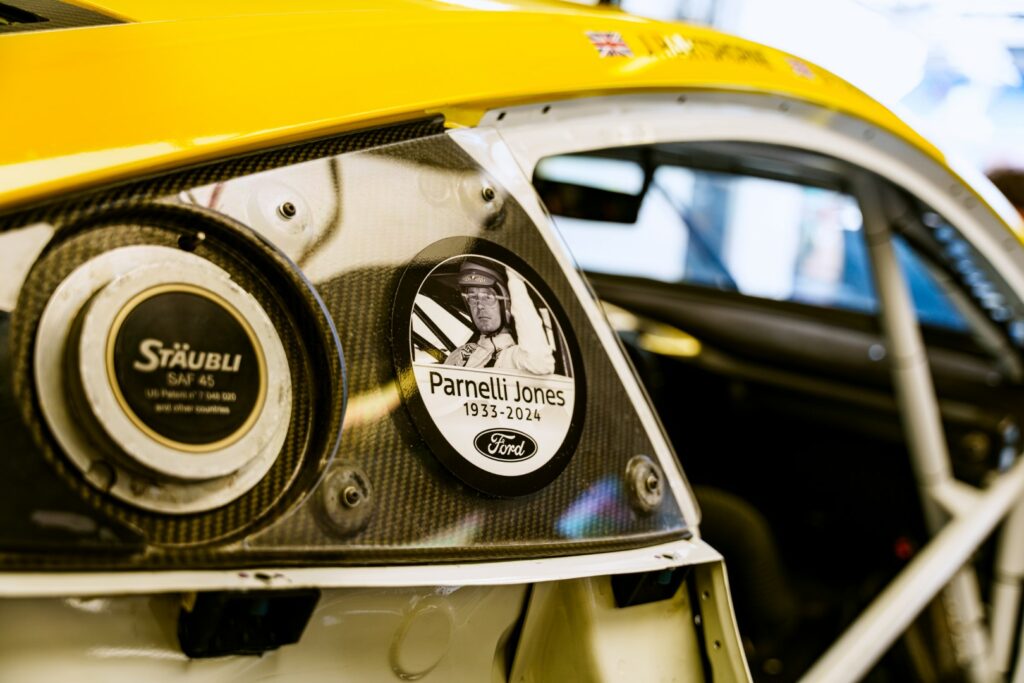
The drivers end up doing a fantastic job. Car no. 88 places third in class, while no. 44 is one place behind. Sadly no. 77 suffers some time-consuming technical maladies that put it much lower down in the field, but it still finishes. For year one, that’s incredibly good going.
The 2025 race will be a big year for the Mustang at Le Mans – the Mustang Challenge will be bringing a field of Dark Horse Rs to La Sarthe, and, of course, there’ll be more GT3 challengers. Perhaps, too, even more fans.
Will Ford, speaking before this year’s race, is looking forward to the future: “It speaks to the success and commitment we’ve brought to the race in the past. We’re here to be a strong participant, to uplift the community and hopefully get a podium.”
Whatever 2025 brings, one thing is for sure: the people who make it, and the people who love it, will put their all behind the Mustang next year.
For more about the Le Mans 24 Hours, see here.
